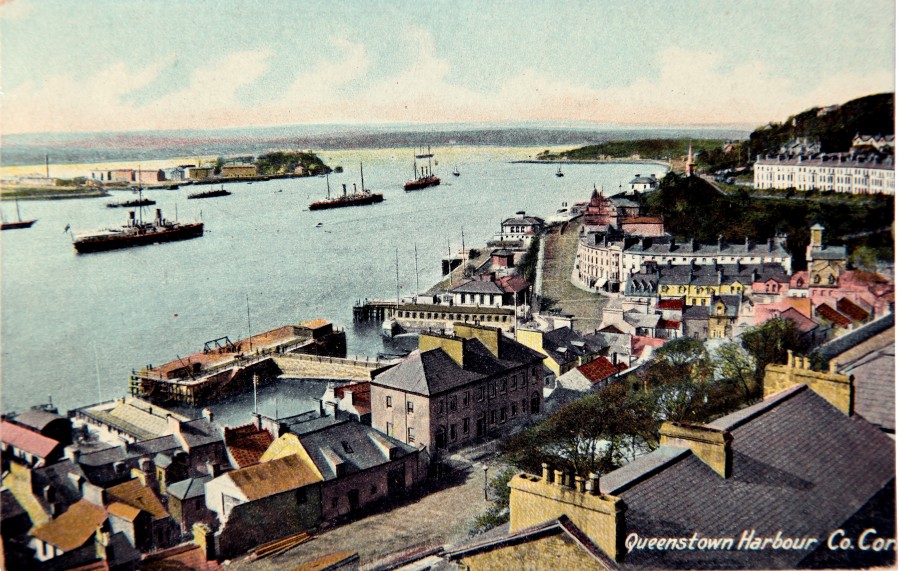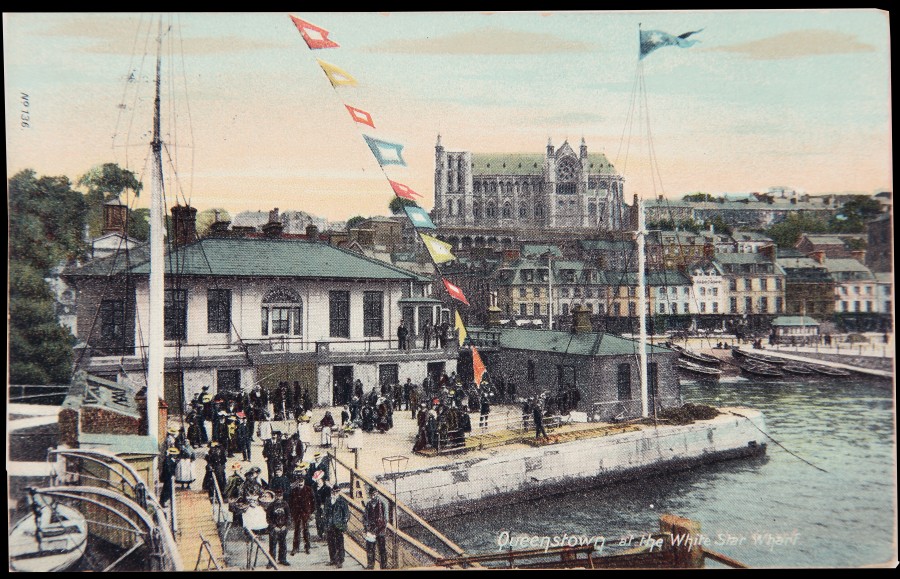
Kieran’s Our City, Our Town Article,
Cork Independent, 31 January 2019
Tales from 1919: The Return of the Liners
On Saturday evening, 11 January 1919 the first after-war advertisement of the City of Cork Steam Packet Company appeared in the Cork press. It announced passenger rates and accommodation on outward bound ships from Cork. Shipping within the port had re-emerged but German submarines had sunk many of the comfortable and speedy boats and ships.
In January 1919, three ships of the steam packet company operated from Penrose Quay. They were the Kilkenny, Chieftain and Eblana and all three were good boats in their own way. However, all three were not large ships and hence passenger booking was restricted. They were also prone to rocking in poor weather. Such restrictions were sent to the Ministry of Shipping and Transport. The Chieftain was the regular Fishguard boat whilst the Kilkenny was the Liverpool bound ship with remit as well to transport live stock. The Eblana also had connections to English ports.
The minutes from the Cork Harbour Board meeting on 15 January 1919 detail the extent of lobbying work pursued by Mr D J Lucy, Chairman, in relation to get foreign steam ship companies to re-open trade with Cork. Memory was ever present of the several steam packet companies, which had left Queenstown (now Cobh) a few years previously. In the late nineteenth century, no fewer than ten North Atlantic steam packet companies were calling to Liverpool to convey passengers, of which nine stopped at Queenstown. These were the Cunard Line, the Allan Line, the American Line, the Beaver Line, the, the Dominion Line, the Inman Line, the Guion Line, the National Line and the White Star Line. The Warren Line was the only company that did not make Queenstown a port of call. The advent of the twentieth century coincided with new challenges. Queenstown’s position as a North Atlantic gateway of departure was threatened before the century was a decade old. In 1907, the White Star Line changed its terminal from Liverpool to Southampton and by-passed Queenstown as a port of call on its eastbound route.
The heritage panels in the Queenstown Story Heritage Centre reveal that on 6 November 1859, the first Cunard paddle steamer named Canada steamed into Cobh harbour beginning a connection between Queenstown and North America. The connection continued without interruption except during the periods of the two world wars. The residents of Queenstown saw up close the development in size, speed and comfort of the Cunard transatlantic liners from wooden paddle steamer to quadruple-screw, thousand-foot liner. Much of the population worked with the company. Great improvements were also made by the Cork Harbour Board, with port facilities and lighting and buoying of the entire area under the control of that ever-watchful board.
Under the date 10 January 1919, the General Manager of the Cunard Company, Liverpool wrote to the Cork Harbour Board. The manager acknowledged receipt of the Board’s letter and the wish that the Cunard Company would resume their sailings to and from the Port of Cork, now that all Admiralty restrictions at the port were cancelled; “We have been looking forward to the resumption of our old friendly relations with the Commissioner, and hope it will not be long before our first ship calls at Queenstown. Meantime we note that we may count upon the Commissioners giving every facility to the Company, and the matter shall receive our careful attention”.
The Managers of the White Star Line, replying to a similar letter from the Cork Harbour Board noted: “We have already had under consideration the question of recommencing the call of our steamers at your port, but for the moment we are unable to make any definite plana in connection therewith. Our vessels are carrying full complements of troops westward, and are still running under Liner Requisition. We will not fail to advise you immediately we see an opportunity of resuming not only the call of the steamers, but also the old friendly relations, which, as you say, have existed between us for such a long period”.
Liverpool’s Mersey Docks and Harbour Board gave one month’s notice of surrender of the hopper Owenabue. Harbour Members said that this would mean a big loss of income to the Board as the hopper was let out at £350 a month. It was decided to revert to the pre-war hiring arrangements, £250 a month.
In connection with the resumption of the docking outside of Cork harbour of the White Star and Cunard liners in the spring of 1919, the Town Clerk of Queenstown wrote in January to the managers of the companies. He outlined the question of and proposals for an improved tender service. His letter gives insight into the challenges of not being able to bring the larger ships into the harbour and the inconvenience of it for passengers. In pre-war times the ordinary tourist traffic dealt with the tenders Ireland and America. They were ill adapted to the work required of them – that of intercepting the liners in the open sea outside the mouth of Cork Harbour and conveying hundreds of passengers and their heavy luggage to the deep-water quay at Queenstown. The tenders were responsible for unnecessary delays to the liners. For example, working from them at sea in bad weather often led to a failure of unloading. It was also well known that large numbers of American tourists wishing to disembark at Queenstown to tour Ireland, declined to do so when they found the small class of ill-equipped tender provided to convey people to the shore – a distance of several miles.
Missed a column last year, check out the indices at Kieran’s heritage website, www.corkheritage.ie
Kieran is also showcasing some of the older column series on the River Lee on his heritage facebook page at the moment, Cork Our City, Our Town.
Captions:
982a. Postcard of Liners at Queenstown (now Cobh), c.1900 (picture: Cork Harbour Through Time, 2014, by Kieran McCarthy & Dan Breen)
982b. Postcard of White Star Line Offices, Queenstown, c.1900 (picture: Cork Harbour Through Time, 2014, by Kieran McCarthy & Dan Breen)


